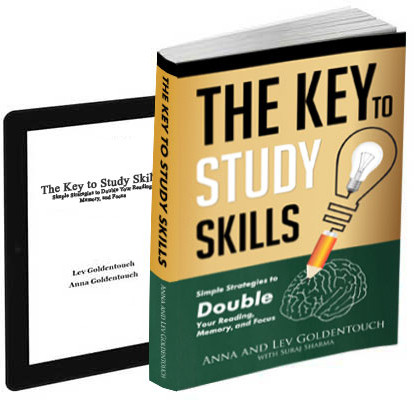Education is acknowledged as the cornerstone of personal development and national progress. But how knowledge is taught and learned can be quite different depending on whether it’s taught towards rote learning or meaningful learning in education and cognitive sciences. Of the many contentious issues in educational and cognitive psychology, one of the most polarized has to be rote learning vs. meaningful learning. There are such extreme ways of learning between these two. One is rote memory maintenance, the other is understanding and applying it to the o real world.
Understanding their differences is paramount for students and educators who wish to improve memorization, pique interest, and develop a passionate engagement with the material. Whether you are a student studying for an exam or a professional looking to improve your skills, the way you choose to study can have a big impact on how effective your learning is. We dig into what each method of teaching is, the pros, cons, and whether they belong in today’s education and professional environment.
Understanding Rote Memorization
The issue of “Rote memorization vs meaningful learning” usually started with people not even understanding the essence of rote memorization. Fundamentally, this is a technique of repeating information to the point where it becomes learnt. It is not diligent about reading comprehension or understanding context. The learner can recall facts, dates, formulas, and terms but does not understand how these relate to one another oo the greater whole.
This approach is overrepresented in early education and test-based curricula. Drills, flashcards, ds, and verbal repetition are used to reinforce that “rote memory.” It’s also known as “rote learning,” which many think of as a fast route to memorizing information likely to be used in the short term, such as during examinations or in situations of rapid recall.
On discovering the “rote learning definition,” you see that the technique centers on mechanical repetition. It is passive, effective in the short run, and one that does not typically recruit higher-order cognitive processes. For instance, rote learning is commonly used to learn multiplication tables or historical timelines.
Exploring the Depths of Meaningful Learning
On the other side of the continuum stretching from rote memorisation to meaningful learning is a model that is arguably more immersive and authentic: meaningful learning. By doing so, it stimulates new knowledge to be associated with what is already known and thus contextually grounded because it requires thinking critically, solving, and collaborating, which are widely respected in professions and academic life.
“What rote learning becomes clear to us when we compare it with meaningful learning. Instead of simply memorizing facts and figures, students engage in discovering relationships, cause-and-effect, and the science behind it all. For instance, one would notice that water boils at 100 °C; a student would know why it boils at that temperature and all variables involved in that behavior, including atmospheric pressure.
The article What Is Meaningful Learning? Beautifully encapsulates this concept by discussing the power of connecting theoretical knowledge with lived experiences. Meaningful learning goes beyond memory. It transforms passive information into actionable intelligence, enriching both personal growth and academic performance.
Additionally, meaningful learning is supported by the idea of experiential engagement. The article What Is Learning by Doing? Reinforces how action-based learning environments encourage curiosity, creativity, and adaptability—features that are often absent in rote-based strategies.
Benefits of Rote Memorization
For all its faults, rote memorization has several values, particularly in particular situations:
- Rote Learning: The skill of remembering things perfunctorily, such as in an examination hall or during an argument inside a courtroom, could be useful at times. This edge comes from regular training and repetition.
- Cognitive Discipline: Memorization increases cognitive fluency. The promise of practicing and retrieving information is that it focuses the mind and builds long-term cognitive muscle.
- Memory Exercises: Like exercising physical muscles, the brain builds strength through repetition. This repetition training hones a child’s memory retention for basic facts.
- Clear Language in Complex Fields: Law, medicine, and engineering all require precision. As long as you remember the right pastimes or jargon, there is no chance of anyone getting the wrong idea.
- Rapid Foundation Construction: Newcomers to a field profit from rote learning basics, words o,r formulas that help underpin further study and use.
Yet, both these advantages need to be carefully balanced, in particular, when we compare memorisation and meaningful learning. Mechanical strategies need to be the means to an end, not become the end in themselves.
Drawbacks of Rote Memorization
Rote memorization is effective, but has other issues:
- No Understanding: As in the first example, students forget what they memorized when they no longer need to know (like an exam) because they can’t apply it to anything meaningful in their world.
- Suppression of Thought: Compulsive learners struggle to adapt their knowledge to new settings, as it has never been properly internalized.
- Engagement Issues: Rote learning may seem boring and repetitive. Without relevance or application, disengagement ensues.
- Homogeneous Above Difference and Diversity. It disregards that people learn in different ways, and it is, in effect, the same for everyone.
- Fragile Learning: In a high-stakes or distracted setting, students who only had rote-mimed recollection may blank out – their fragility laid bare for all to see, as if it was not there to begin with.
Advantages of Meaningful Learning
In comparing rote memorization vs. meaningful learning, the latter frequently comes out ahead because of its transformative effect:
- Develops Thinking Skills: Students develop higher-order thinking skills as a result of gaining a deeper understanding.
- Lasting Memory: Facts or dates incorporated meaningfully are remembered for years, perhaps for a lifetime, because of the practical or emotional attachment during the learning process.
- Makes Them Want to Learn: Students feel that what they are learning matters, making them feel motivated and engaged.
- Facilitates Transferability: Abilities and information acquired within a setting are transferable to others, enhancing one’s versatility and flexibility.
- Promotes Social Learning: Team projects and peer interaction are a vital part of authentic learning that reinforce skills, teamwork, and communication.
The importance of versatile learning is well-highlighted in Which Skills Are Required for Accelerated Learning?, emphasizing that curiosity and personal involvement are crucial for retaining knowledge at higher levels of complexity.
Challenges of Meaningful Learning
However, meaningful learning also has its limitations.
- Time requirements: It takes a longer time to build knowledge that is useful in discussions, applications, and syntheses.
- Requires Motivation. To the extent that students lack intrinsic motivation, they might struggle to expend the necessary effort to achieve deeper understanding.
- Background Gaps: Students without background knowledge may fail to understand new information, becoming confused or disengaged.
- Hard to Standardize: Schools like things that can be measured, and meaningful learning doesn’t always fit into a neat little box.
- Teacher Mobility: To effectuate productive learning requires talented teachers to frame discussions, pose problems, and accommodate a range of learner capabilities.
However, with supportive learning environments, technological AI, DSS, and motivational frameworks, these barriers can be reduced.
Comparing Rote Learning vs Meaningful Learning
A direct comparison of rote memorization vs meaningful learning illustrates their divergent nature in education:
| Aspect | Rote Memorization | Meaningful Learning |
| Approach | Repetitive and passive | Contextual and active |
| Objective | Memorize for short-term recall | Understand for long-term application |
| Retention | Often short-lived | Deep and lasting |
| Engagement | Low; task-oriented | High; curiosity-driven |
| Learning Style | One-size-fits-all | Tailored to individual experiences |
Meaningful learning is particularly critical in today’s dynamic world. The digital age demands professionals who can think critically, adapt to new information quickly, and collaborate effectively. These are not traits developed through rote methods but through interactive, experiential learning.
A profound perspective is offered in Unveiling the Dynamics of Habits, Plasticity, Learning, and Freedom, which reveals how learning reshapes our habits and broadens mental flexibility. It argues for integrating freedom and personal agency into the learning process—a central principle of meaningful learning.
Incorporating Both for Balanced Learning
Although rote memorisation and meaningful learning are often juxtaposed or placed at opposite ends of the spectrum, a combination of the two will likely produce the optimal outcome. Vocabulary, for instance, may begin as rote but should also lead to contextual application for deep comprehension.
Students can begin by using repetition to solidify basic information, then engage with projects, discussions, and real-world applications to convert that base into expertise. The KeyToStudy Superlearning MiniCourse offers a fantastic resource for learners looking to master this integration, balancing repetition with high-engagement cognitive activities.
Furthermore, engaging with communities like KeyToStudy on Facebook allows learners to stay inspired, share progress, and find resources tailored to enhance their memory and learning techniques.
The Future of Learning
In this age of rapidly expanding knowledge, learners can’t just memorise, as we have in the past. With machine learning, gamified apps, and virtual learning environments, we have more tools than ever to personalize education.
However, background information will still need some level of rote memorization. So the contest should not be over the abolition of rote learning, but over when and how to deploy it as a scaffold for more thoughtful experiences.
We want to know whether students are mastering knowledge and how well they can apply that knowledge with insight. As students grasp the interplay between short-term memorization and long-term understanding, the learning becomes limitless—they become more fully the creators, thinkers, and leaders they were meant to be.
Conclusion: Reclaiming Learning as a Lifelong Journey
As we conclude this discussion of rote memorization vs meaningful learning, it’s also evident that education is more than simply taking in information. Though “rote learning vs meaningful learning” may appear at odds, they all have their place when properly employed.
“Rote memorization vs meaningful learning” is not merely an academic dispute — it’s a choice that affects educational success, professional accomplishments, nd lifelong curiosity.
Let repetition be the spark, but let understanding be the flame. The path to becoming an expert learner is to select these strategies according to a long-term goal and the depth of personal engagement. With the proper tools and mindset, every student can move from rote repetition to real mastery.

Get 4 Free Sample Chapters of the Key To Study Book
Get access to advanced training, and a selection of free apps to train your reading speed and visual memory

